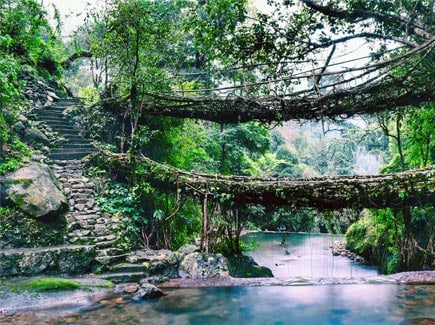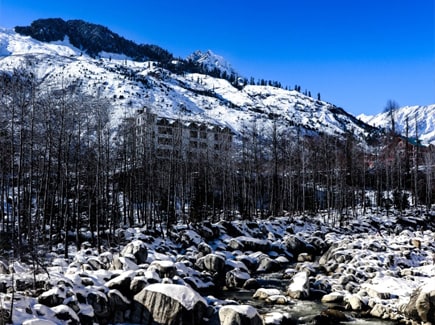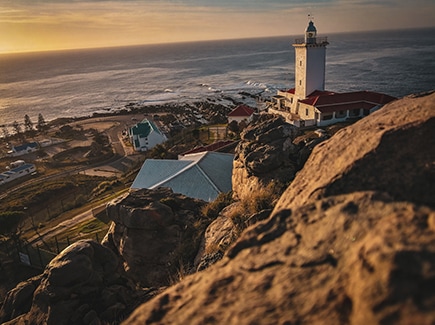Published in the Sunday Indian Express Magazine - Eye on 28 January, 2024
While cherry blossoms have become an iconic symbol of Japan in the international imagination, they sometimes overshadow the country's other equally incredible attributes.
What comes to your mind when you think of Japan? I bet it’s the stunning pink flowers in full bloom in the gardens and by-lanes of Tokyo and Kyoto. And I don’t blame you. The Cherry Blossom in Japan is one of the more popular seasons to visit the Land of the Rising Sun (i.e., Japan). Increasingly, Indian travellers have started to pick Japan as a tourist destination over destinations like Europe and the USA. When I look at our travellers booking trips to Japan, I see 50% booking in just two of the twelve months - March and April - to coincide with Japan’s Cherry Blossom season.
Cherry blossoms in Japan, or "sakura," are a beautiful sign of spring. They bloom in soft pink and are loved for their brief, stunning appearance. People in Japan have celebrated them for centuries. The appreciation of cherry blossoms in Japan can be traced back to the Nara Period (710–794 AD) and Heian Period (794–1185). Initially, plum (ume) blossoms, the flowers of the plum tree were more popular, but over time, sakura gained prominence. During the Heian era, the elite of the Imperial Court enjoyed sakura and would celebrate with picnics and poetry sessions under the blossoms. This custom was known as "hanami," which literally means "flower viewing."
Cherry blossoms have long been a symbol in Japanese culture, representing the ephemeral nature of life due to their short blooming period. This symbolism is often associated with Buddhist concepts of mortality and the transient nature of existence. In contemporary Japan, cherry blossoms continue to hold a significant place. Annual forecasts predict the timing of their bloom, influencing tourism and local festivities. Schools and public institutions often have sakura trees on their grounds, and the cherry blossom season is celebrated with festivals and gatherings across the country. These flowers are important in Japanese culture and attract many travellers not only from India, but all over the world every single year. All in all these Cherry Blossoms have become a dominant symbol of the country in the international imagination.
Now, if you have been reading my articles or listening to my podcasts (Travel Explore Celebrate Life and 5 Minute Travel Tips), you will know that I love Japan. It is one of my favourite travel destinations outside of Incredible India. Since my first visit in 2016, I have been there every single year other than 2 years of 2020-21 when travel came to a standstill. Yet, not one of my 6 visits has been during the Cherry Blossom period. Why? Because Japan has so many other equally incredible sights and adventures to offer. Knowing I have a multi-entry multi-year visa, I am sure that I will visit the Land of the Rising Sun again and tick off the Cherry Blossoms in a future trip too. So today, I wanted to talk about three other things that make Japan great. Three other things that I highly recommend during the other times of the year. So let’s dive in.
First, summer in the famous Alpine Route. Officially known as the Tateyama Kurobe Alpine Route, this is a unique and spectacular travel route through the Northern Japan Alps. This route is renowned for its breathtaking scenery and the variety of transportation methods used to traverse it. This route cuts through the Hida Mountains, a range often referred to as the "Japanese Alps." Spanning about 90 kilometers, the route involves a combination of various transport modes, including buses, cable cars, trolleys, and a ropeway. The Alpine Route offers some of Japan's most stunning mountain scenery. Key attractions include the Tateyama Mountain Range, the Kurobe Dam (Japan's highest arch dam), and the Murodo Plateau. In spring, the route is famous for the "Snow Wall" or "Yuki-no-Otani," where the snow alongside the road can be up to 20 meters deep. The route is typically open from mid-April to November.
Winter must-do is the Hokkaido belt! I have been to this northernmost of Japan's main islands 3 times. Hokkaido is celebrated for its stunning natural landscapes, including pristine forests, calm lakes, active volcanoes, and vast national parks. For me, every trip here has been about something different: 1) Skiing 2) Sapporo Snow Festival 3) Seafood Cuisine. Hokkaido is famous for its excellent winter sports conditions, boasting some of the best ski resorts in Asia. My ski trip was to Niseko, one of Hokkaido’s world-renowned ski resorts. It boasts powder snow and offers perfect conditions for learning how to ski and snowboard with beginner to advanced level slopes on Mt. Niseko-Annupuri. When you are at Niseko, you also get to witness, Mt. Yotei, often known as the twin sibling of Japan’s famous Mt. Fuji. The Sapporo Snow Festival held in Hokkaido’s capital city, Sapporo, is one of Japan's largest winter events. It features spectacular snow and ice sculptures all through the city and attracts millions of visitors each year.
My third Hokkaido holiday was actually in the summer, and was all about seafood. Sapporo is famous for its fresh and high-quality seafood, especially crab, sea urchin, and salmon. So expect a lot of Seafood Bowls with Rice and Sushi parlours. If you are a fan of cheese and milk products, Hokkaido is also known for its dairy products. You will be treated to a number of cheese tarts and the famous Hokkaido Cheesecake. During the summer, especially in areas like Furano, vast and vibrant lavender fields bloom, attracting photographers and nature lovers. And if you are a beer lover, besides the Sapporo Snow Festival, Hokkaido hosts various other festivals, including the Sapporo Beer Festival. All in all, Hokkaido’s combination of natural beauty, cultural richness, and recreational opportunities makes it a unique and appealing destination that has not yet been fully explored by the Indian traveller.
Finally, the third, and I believe most under-rated time of year to visit Japan, from mid-September to early December, is to see The Autumn Colours of Japan, also known as "koyo" or "momiji" in Japanese. The autumn colours in Japan are a spectacular natural phenomenon that start in the northern island of Hokkaido before gradually moving southwards to the central and southern parts of Japan. The leaves of various trees change colours, creating a vibrant tapestry of reds, oranges, yellows, and golds. The Japanese maple tree, with its brilliant red leaves, is particularly famous, but ginkgo trees with their golden hues and Japanese beech trees with their rustic oranges also contribute to the stunning scenery. Some of the best places to view autumn colours in Japan include Kyoto, particularly in temples and gardens like Kiyomizu- dera and Tofuku-ji; Tokyo, in parks like Shinjuku Gyoen and Rikugien; the Japanese Alps; and the scenic areas of Nikko and Hakone.
Just like cherry blossoms, the changing autumn leaves have been celebrated in Japanese literature, art, and poetry for centuries. This appreciation reflects the Japanese concept of "mono no aware," the awareness of the impermanence of things, and a gentle sadness at their passing. Many areas in Japan host autumn foliage festivals (momiji matsuri), where temples and parks are often illuminated at night, providing a different perspective on the autumn colours. These festivals often include food stalls, cultural performances, and other events. The beauty of autumn in Japan lies not just in the vivid colours of the foliage, but also in the way it transforms the landscape, offering a new perspective on well-known sites and a deeper appreciation of the country's natural beauty.
So, yes along with the famous Cherry Blossom seasons, there are three other reasons, why you should visit Japan. So is 2024, the year you do the Alpine Route or the Autumn Colours or the Hokkaido belt? The choice is yours, I can only guarantee you one thing, you will definitely Celebrate Life in Japan! Arigato Gozaimasu!





























































Post your Comment
Please let us know your thoughts on this story by leaving a comment.